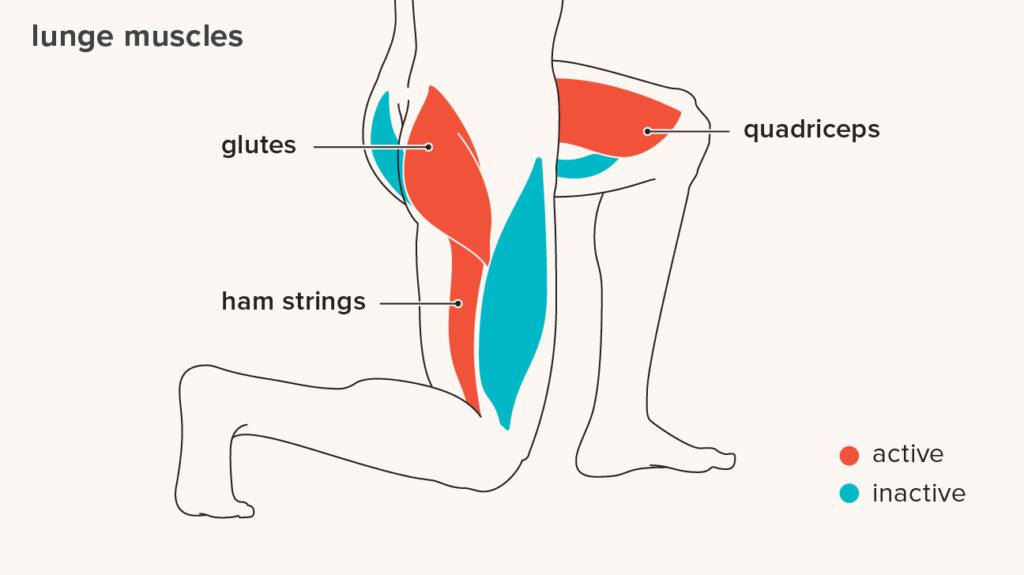Justina Maslovskaitė, an instructor-physiotherapist at the Health and Sports Center, shares her knowledge about lunges and squats.
Legs working together and separately
The lunge is another basic exercise for the legs that activates the most important muscle groups in the legs such as the quadriceps (front of the thigh), hamsters (the back of the thigh), buttocks and calves. A lunge differs from a squat in that during a lunge one foot has more strain than both at the same time as during a squat. Therefore a lunge should be done for everyone to avoid an imbalance in the leg muscles so that the legs can work not only together but also separately. We often feel that when doing a lunge we can do it easily with one foot and more effort is needed with the other. While doing this exercise with the foot you are uncomfortable with, we reduce the imbalance in the muscles of the different leg. We also develop balance by doing a lunge across the room. You can do the same exercise with the shoes and without it and you will feel how differently your body tenses and keeps your balance. If you don’t feel much of a difference, you can incorporate all sorts of twists through your torso, leg raisesand other moves to knock yourself out of balance and train it at the same time.
Benefits for feet and calves
 Muscles of the foot and calf are activated and trained strongly during the lunge. This aspect is important for people prone to flatfoot. Stepping forward requires a soft landing on the foot, landing down and stopping in time, and this also involves the muscles of the foot and calves. For people with flat feet or those who are prone to it, I would suggest to make sure that the arch of the foot does not fall down during the exercise (feet do not fall inwards) so you will achieve results even faster. We can find all sorts of variations, but the main ones are:
Muscles of the foot and calf are activated and trained strongly during the lunge. This aspect is important for people prone to flatfoot. Stepping forward requires a soft landing on the foot, landing down and stopping in time, and this also involves the muscles of the foot and calves. For people with flat feet or those who are prone to it, I would suggest to make sure that the arch of the foot does not fall down during the exercise (feet do not fall inwards) so you will achieve results even faster. We can find all sorts of variations, but the main ones are:
- lunge in place,
- pendulum lunge,
- stepping aside,
- walking lunge,
- jumping and changing legs lunge
It is also important to perform lunges for different sports (tennis, yoga, basketball, etc.) in order to develop the capacity to perform controlled movements that are similar to lunges. Find more variantions and visuals about lunges here.
